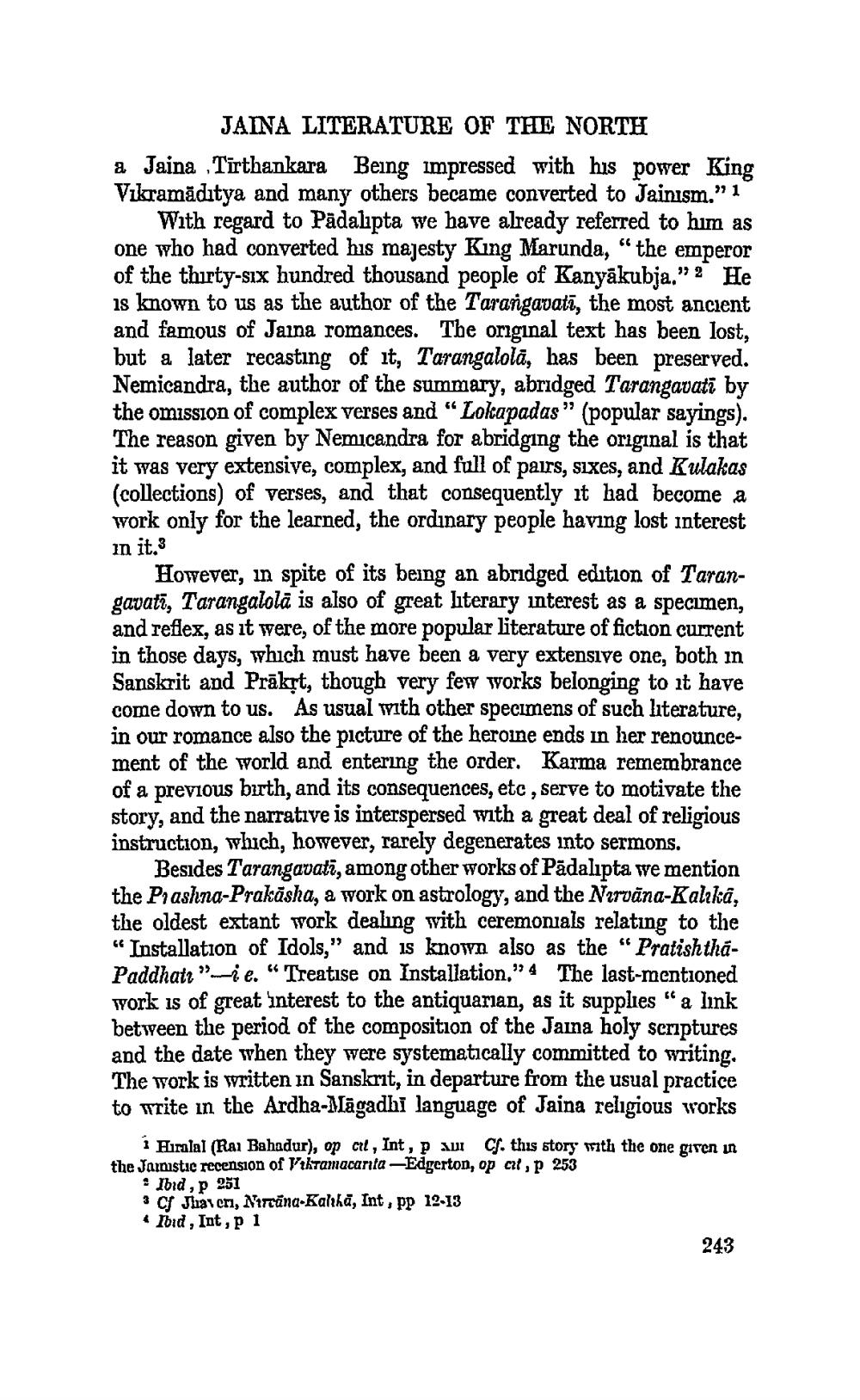________________ JAINA LITERATURE OF THE NORTH a Jaina Tirthankara Being impressed with his power King Vikramaditya and many others became converted to Jainism." 1 With regard to Padalapta we have already referred to him as one who had converted his majesty King Marunda, "the emperor of the thirty-six hundred thousand people of Kanyakubja." 2 He 18 known to us as the author of the Tarangavati, the most ancient and famous of Jaina romances. The original text has been lost, but a later recasting of it, Tarangalola, has been preserved. Nemicandra, the author of the summary, abridged Tarangavati by the omission of complex verses and " Lokapadas" (popular sayings). The reason given by Nemicandra for abridging the original is that it was very extensive, complex, and full of pairs, sixes, and Kulakas (collections) of verses, and that consequently it had become a work only for the learned, the ordinary people having lost interest in it.3 However, in spite of its being an abridged edition of Tarangavati, Tarangalola is also of great literary interest as a specimen, and reflex, as it were, of the more popular Literature of fiction current in those days, which must have been a very extensive one, both in Sanskrit and Prakrt, though very few works belonging to it have come down to us. As usual with other specimens of such literature, in our romance also the picture of the heroine ends in her renouncement of the world and entering the order. Karma remembrance of a previous birth, and its consequences, etc, serve to motivate the story, and the narrative is interspersed with a great deal of religious instruction, which, however, rarely degenerates into sermons. Besides Tarangavati, among other works of Padalupta we mention the Prashna-Prakasha, a work on astrology, and the Nirvana-Kalaka, the oldest extant work dealing with ceremonials relating to the "Installation of Idols," and is known also as the "PratishthaPaddhatz" - e. "Treatise on Installation." 4 The last-mentioned. work is of great interest to the antiquarian, as it supplies "a link between the period of the composition of the Jaina holy scriptures and the date when they were systematically committed to writing, The work is written in Sanskrit, in departure from the usual practice to write in the Ardha-Magadhi language of Jaina religious works and the date thod of the compositiomaman, as it supp i Hiralal (Rai Bahadur), op art, Int, P au Cf. this story with the one given in the Jarmstic recension of Viktomacanta-Edgerton, op cit, p 253 ? Ibid, p 251 C Jhancr, Nurcana-Kalha, Int, pp 12-13 Toid, Int, P 1 243




